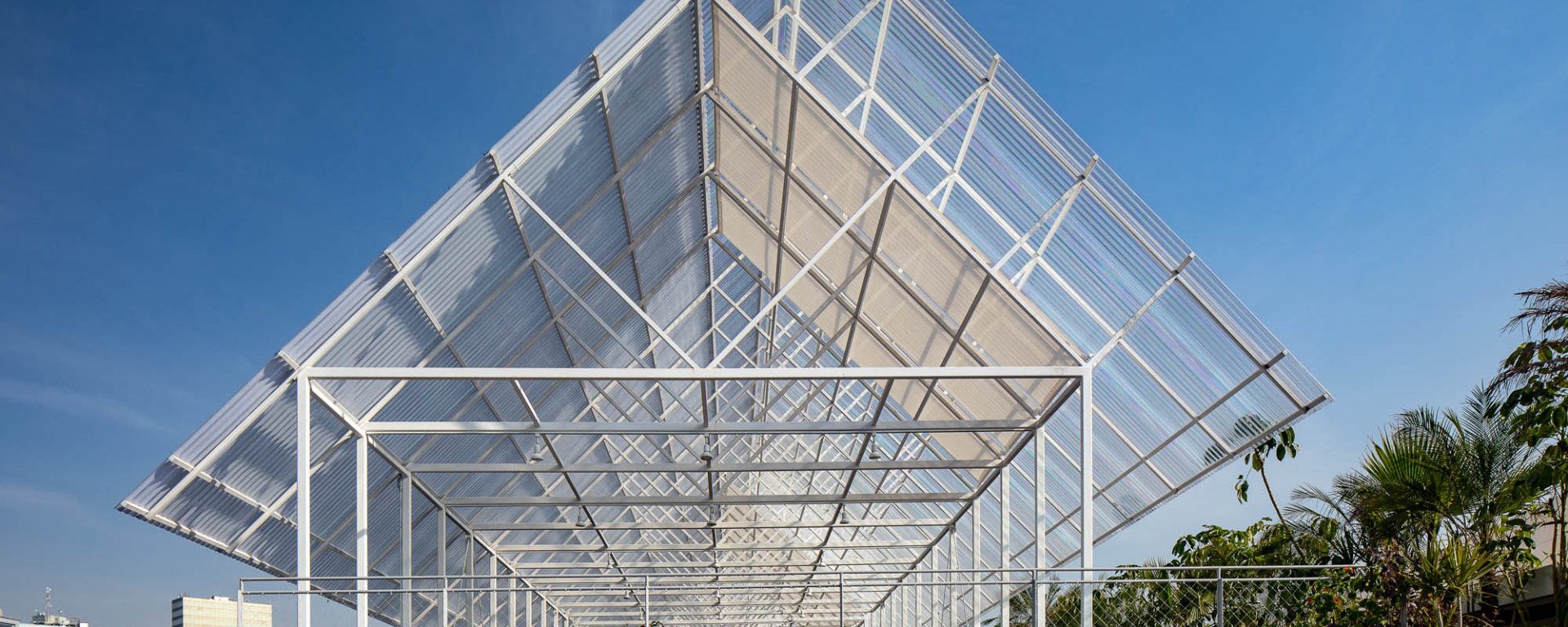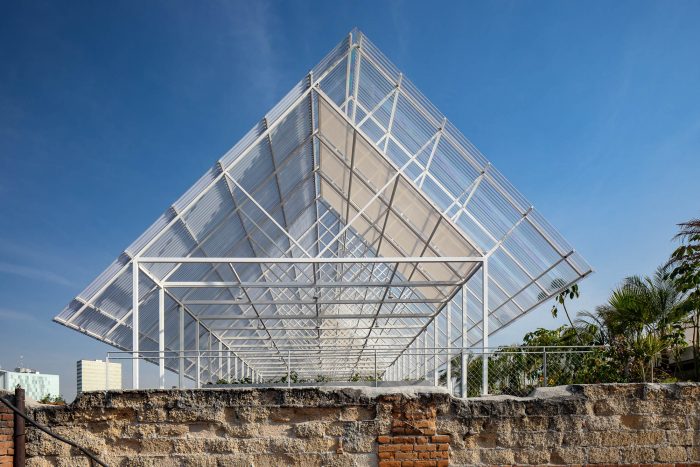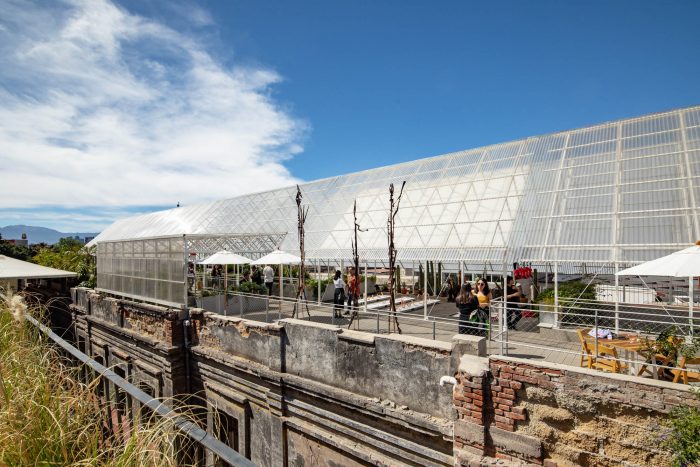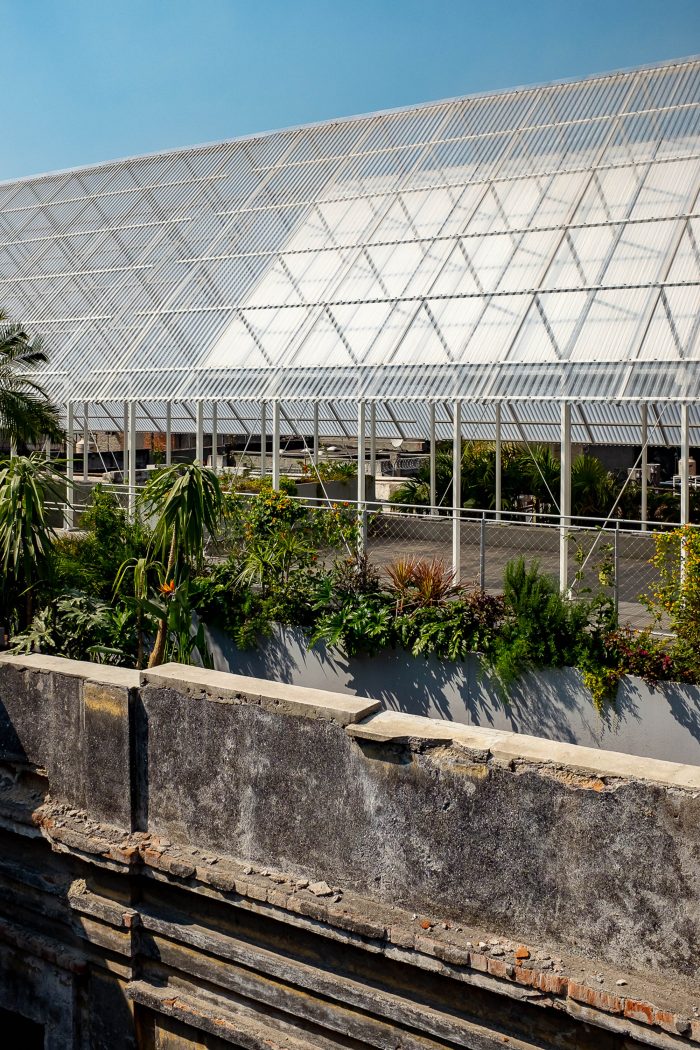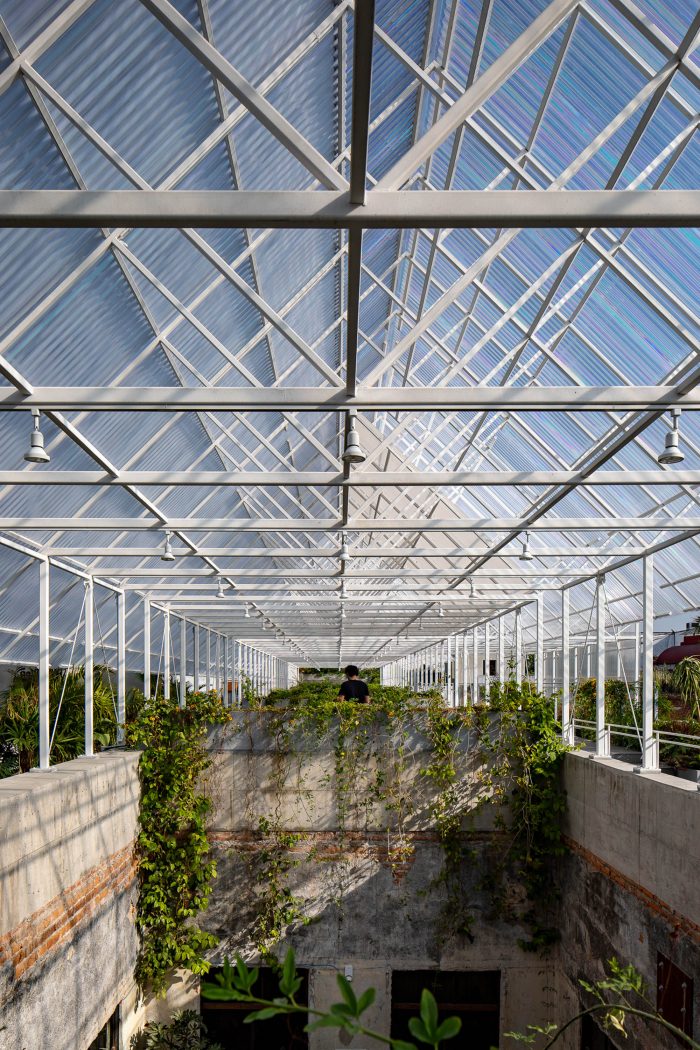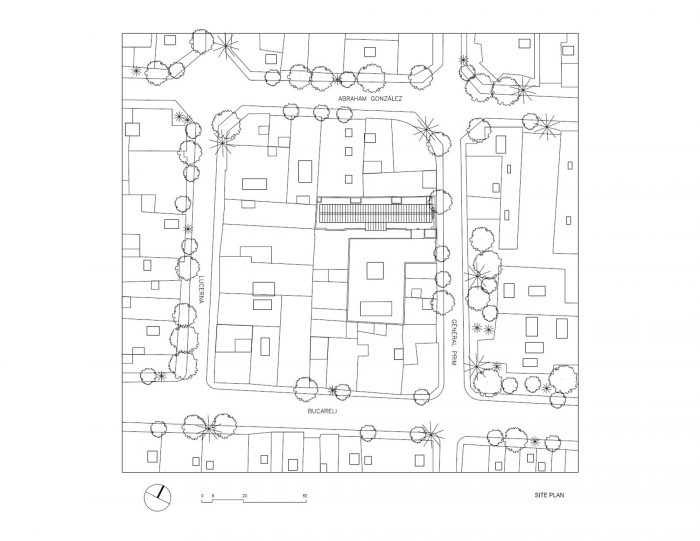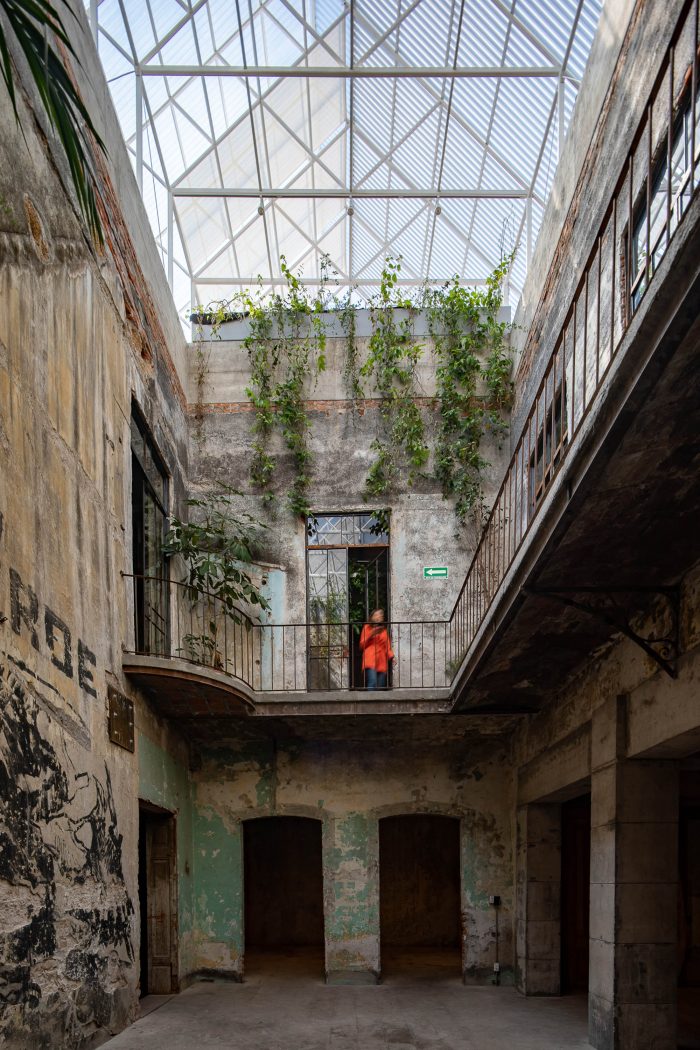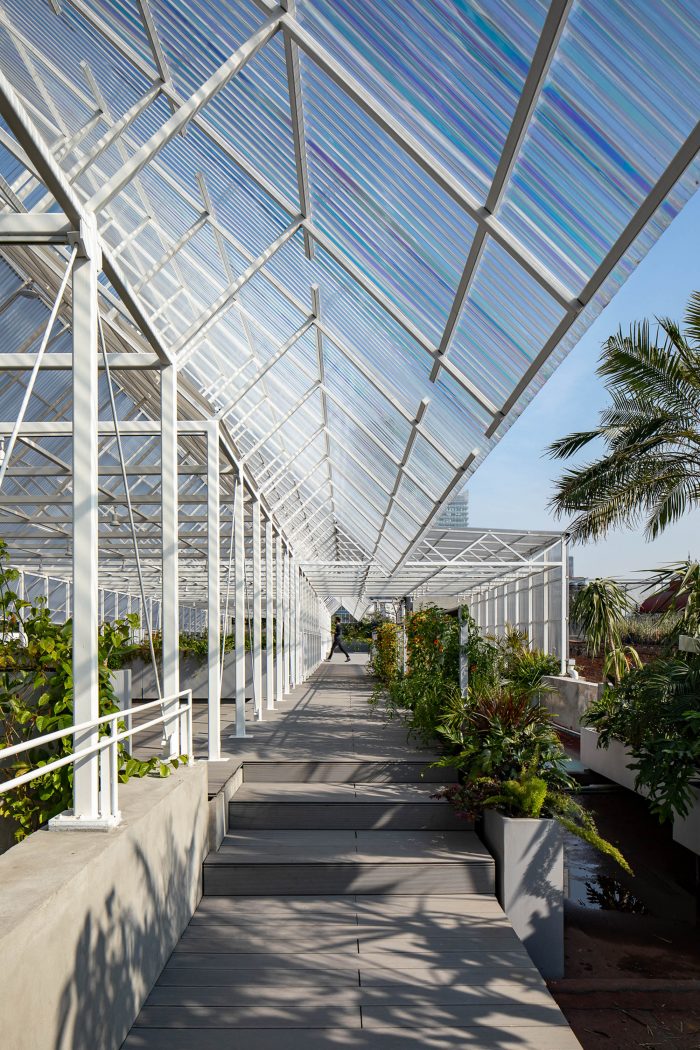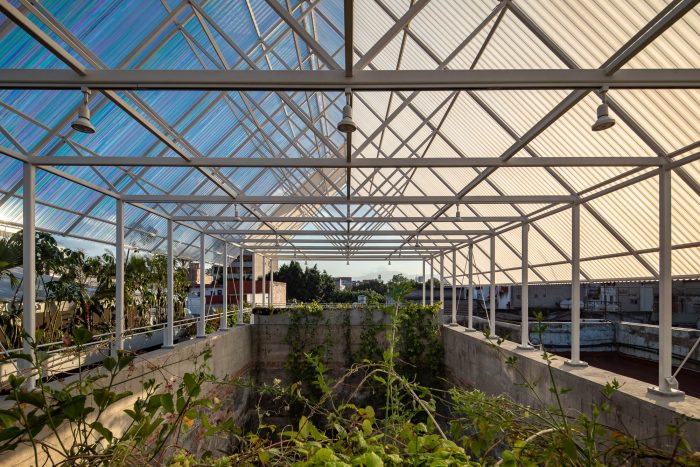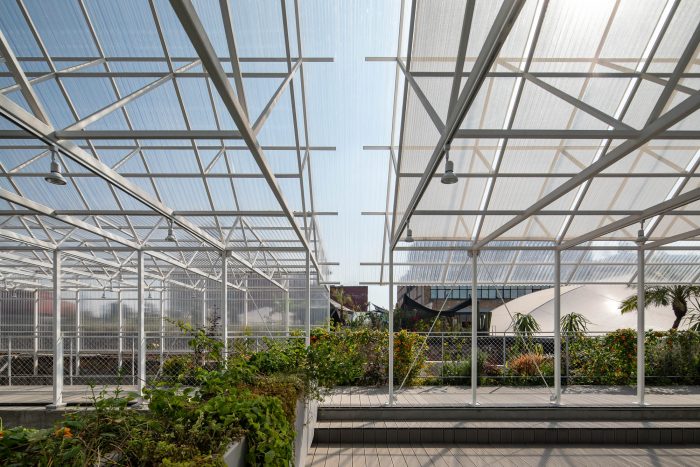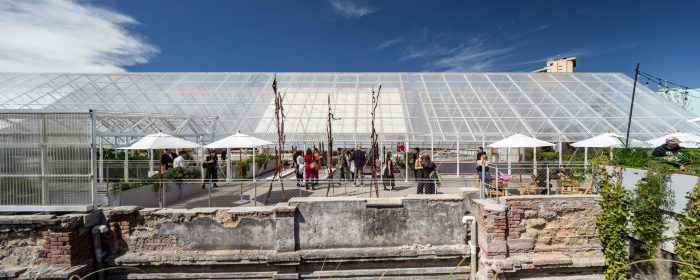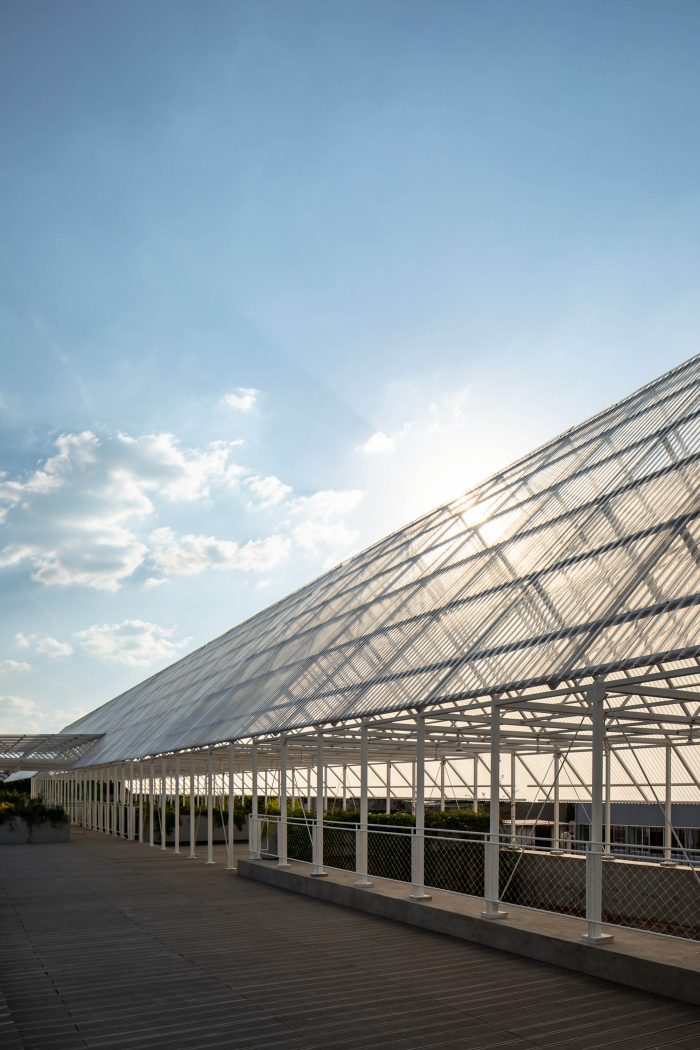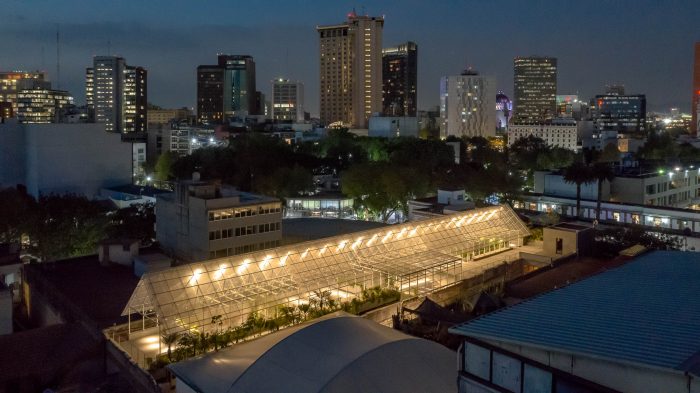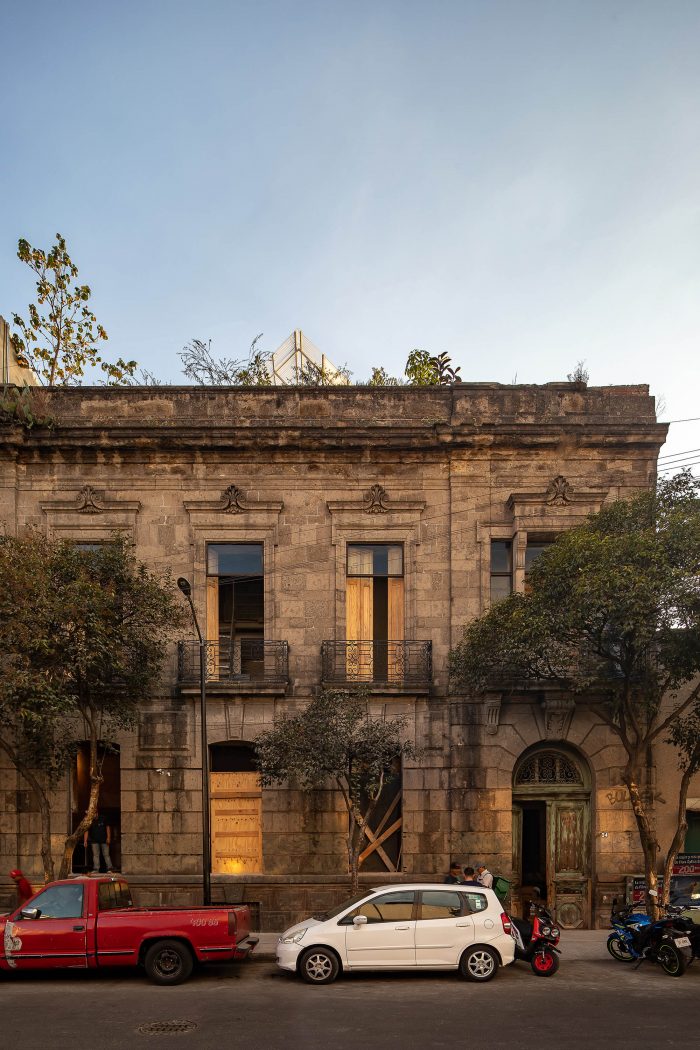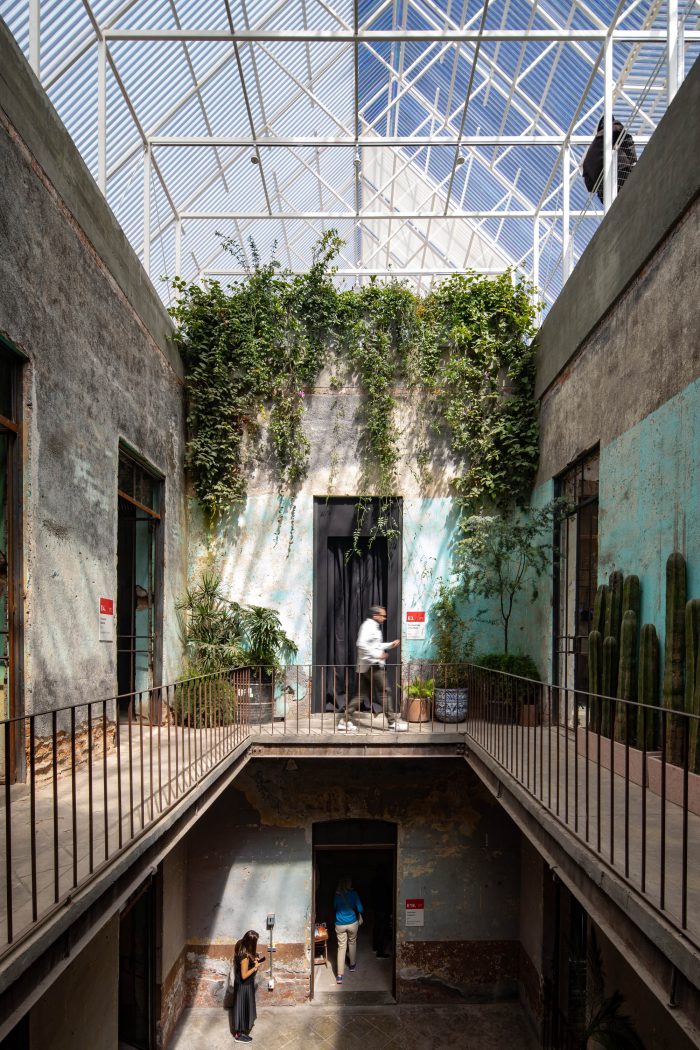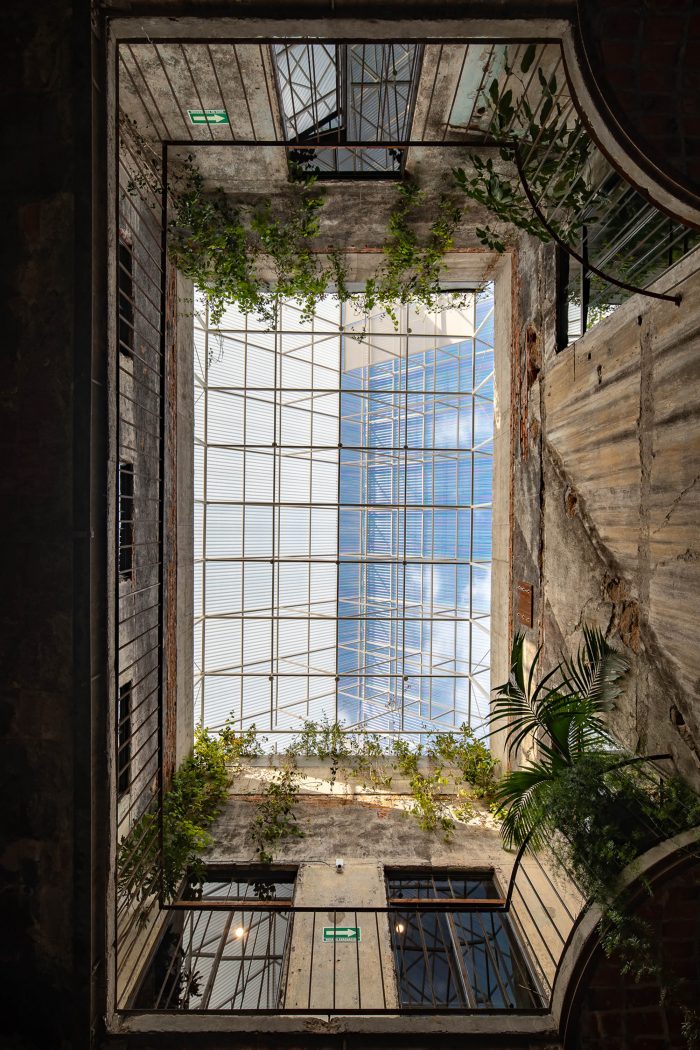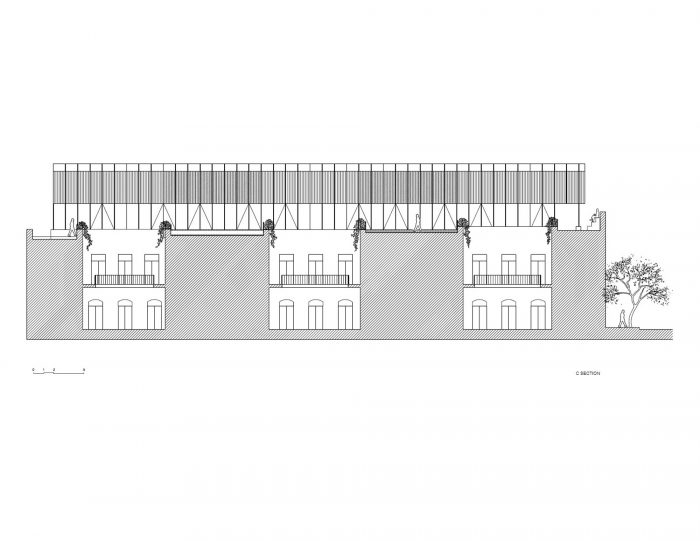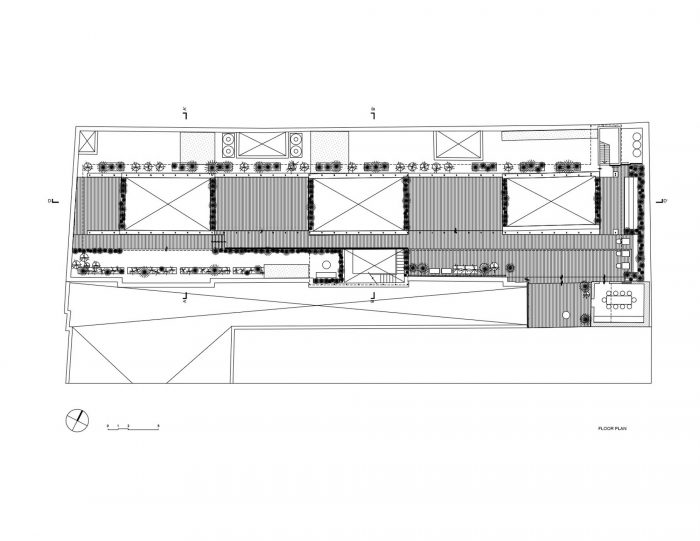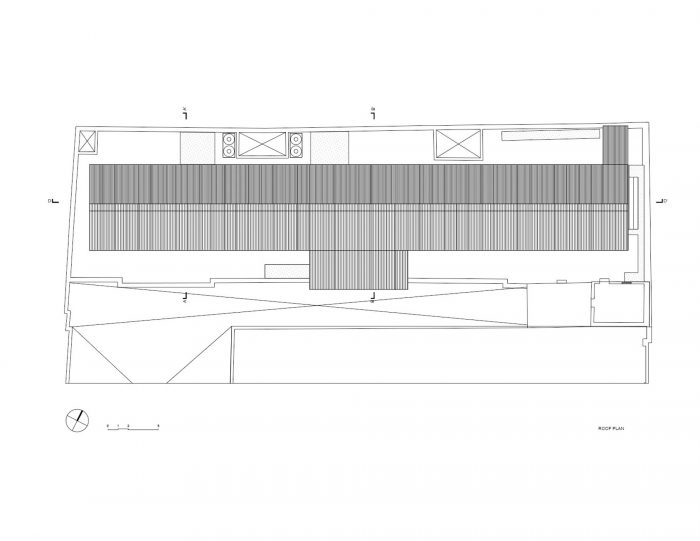该项目位于墨西哥城中心的一座二十世纪初的宫殿屋顶上,这里是举办文化和节庆活动的地方。为了防止偶尔的雨水打断庭院中组织的活动,业主要求覆盖现有的三个天井。我们没有进行三次独立的干预,而是产生了一个单一的方案:一个连续的屋顶结构,长度超过50米,将天井连接成一条直线,并在天井之间产生新的覆盖面。该结构由45根轻质金属桁架组成,每根桁架之间的间距为1.2米,将重量均匀地分配到现有建筑上,并沿屋顶突出了节奏和透视。三角形的屋顶部分被设计成不对称的,这样一侧可以纳入一个有盖的循环。
The project is located on the rooftop of an early twentieth-century palace where cultural and festive events are held, in the center of Mexico City. In order to prevent the occasional rains to interrupt the activities organized in the courtyards, the owner of the property required to cover the three existing patios. Instead of making three independent interventions, we generated one single proposal: a continuous roof structure, measuring more than 50 meters in length, connecting the patios in a straight line, and generating new covered surfaces in between the patios. The structure consists of 45 lightweight metal trusses, each 1.2 m apart, dividing the weight evenly over the existing construction and accentuating rhythm and perspective along the roof. The triangular roof section is designed asymmetrically so that one side could incorporate a covered circulation.
轻质和工业化的合成材料,如PVC甲板、聚碳酸酯板或尼龙网制成的栏杆,力求减轻建筑的重量,并与历史建筑的材料性产生强烈的对比。使用了两种不同类型的聚碳酸酯(半透明和透明),以过滤阳光,同时允许从庭院中看到天空。此外,纺织屏风(借用农业产业)被整合到特定的地方,以减轻太阳光的入射。该结构的几何韵律由另一系列元素补充,如溢出天井并划定新露台的花盆或突出城市天际线干预的灯具。
Light and industrialized synthetic materials such as the PVC deck, polycarbonate sheets, or the railings made of nylon nets, seek to reduce the weight of the construction and generate a strong contrast with the materiality of the historic building. Two different types of polycarbonate were used (translucent and transparent), to filter the sunlight, while allowing to see the sky from the courtyards. Additionally, textile screens (borrowed from the agricultural industry) are integrated into specific places to mitigate solar incidence. The geometric rhythm of the structure is complemented by another series of elements such as the planters that overflow the patios and delimit the new terraces or the light fixtures that highlight the intervention in the city’s skyline.
作为拆除墨西哥城历史性建筑–但通常没有登记–的替代方案,该项目展示了当没有(或还没有)全面修复的资金时,如何以一种明智的方式重新利用和改造有价值的结构。它探索了建筑 “原样 “的美学质量–并通过与当代干预措施的对比来增强这种体验。
As an alternative to demolishing historic – but often not registered – buildings in Mexico City, this project shows how valuable structures can be re-used and adapted in an intelligent way when the financing for a full-scale restoration is not (or not yet available). It explores the esthetic quality of the building “as found “– and enhances that experience by contrasting it with a contemporary intervention.
建筑师:PRODUCTORA
面积:870平方米
年份:2020年
摄影:Onnis Luque
牵头建筑师:Carlos Bedoya, Wonne Ickx, Abel Perles, Víctor Jaime
合作者:Ruy Berumen, Diego Velázquez, Emiliano Rode
客户:Proyecto Público Prim
城市:墨西哥城
国家:墨西哥
Architects: PRODUCTORA
Area: 870 m²
Year: 2020
Photographs: Onnis Luque
Lead Architects:Carlos Bedoya, Wonne Ickx, Abel Perles, Víctor Jaime
Collaborators:Ruy Berumen, Diego Velázquez, Emiliano Rode
Client:Proyecto Público Prim
City:Mexico City
Country:Mexico

